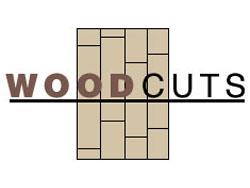Wood Cuts - April 2008
By Rick Berg
The latest figures from the U.S. FlooReport suggest that imports of wood flooring have slowed, perhaps in part because of increased tariffs imposed by U.S. Customs and decreased tariff rebates by the Chinese government, but distributors and others believe the market for imports will remain an important part of the North American wood flooring economy.
According to the latest data from the U.S. FlooReport, after four years of double digit growth, imports into the U.S. declined by nearly 19% in 2006. They were also expected to decline another 16% in 2007 to $369 million. That’s still an impressive 18% of the $2 billion U.S. wood flooring market, according to the figures, but significant growth seems unlikely in the foreseeable future. For one thing, the weakened U.S. dollar has caused the price of imports to rise, diminishing the price advantage that was responsible for much of the imports’ growth earlier in this decade. Imports have also declined, in part, because the overall demand for wood flooring has been in decline for the past two years as a result of the slowdown in the housing market.
It may be that wood flooring imports have—at least temporarily—maxed out. Rick Holden, vice chairman of the National Wood Flooring Association and executive vice president of Derr Flooring, a distributor based in Willow Grove, Pennsylvania, says he expects import numbers to remain relatively flat over the next two years, but that at least two factors will keep demand for some import products from sliding too far.
“One obviously is the demand for exotic species,” says Holden, who adds that imports account for about 10% of Derr’s wood flooring sales. “A lot of consumers want more diversity of choices in the species we have to offer. We have some very good species choices here in North America, but there are many more choices when you look at the exotic species coming in from Africa, South America, Central America, Australia and Asia. That’s a very dynamic market, and as long as that demand is there, I think imports will always be a strong part of our market.”
High-demand exotics include Australian cypress, bamboo, Brazilian cherry, Brazilian walnut, merbau, tigerwood, Santos mahogany, sapele and teak, according to NWFA’s Market Profile.
John Pankratz, materials manager for the Seattle-based distributor Kelly-Goodwin Co., says the demand for bamboo alone should account for significant imports.
“In our market, you have to have a bamboo line, because people like the look,” says Pankratz.
Holden says there will also continue to be a strong import market for specialty items.
“The Chinese market is still able to provide a lower-cost product on items like hand-scraped flooring, because of the advantage they have in labor costs,” says Holden.
Nonetheless, there seems little doubt that the dynamics of the wood flooring import market have changed. The rapid growth from 2001 through 2005 probably could not have been sustained under any circumstances, but it’s also important to note the underlying reasons for that growth. As Pankratz notes, “There have been times in recent years when we had very tight supplies of wood flooring in the domestic market, so that gave imports a foot in the door. It really helped the wood flooring industry as a whole. It made wood flooring a real option for more people, because of the cost factor and also because of the availability that may not have been there in the domestic market.”
Supply is currently not an issue in the domestic market, and the cost differential has been dramatically reduced, so imports will now have to stand on their own merit, according to Pankratz.
“In the past, you couldn’t ignore the price. It got your interest and it got you to try it,” says Pankratz. “But if there’s no price advantage, why would you go through all the trouble dealing with Customs and long lead times and taking the chance that your order might not be right? Right now there’s still somewhat of an advantage to it, but without that price advantage, I don’t think most of us would do it. I wouldn’t do it unless there’s a product we can’t get on the domestic market.”
Challenges remain in the import market. Legislation is working its way through the U.S. Congress to outlaw imports of wood products that result from illegal logging. U.S. Customs is also re-evaluating wood flooring imports since 2003 and in some cases imposing additional tariffs and penalties on imports that may have been improperly classified as duty-free. And the relative value of the U.S. dollar compared to other currencies is also likely to keep the pricing structure of imports in flux for the next several years.
Nonetheless, NWFA’s Wood Flooring Market Profile projects that imports will continue to grow, nearly doubling in size over the next five years to $528 million in 2012.
The National Wood Flooring Association’s membership currently lists more than 130 manufacturers from outside North America, as well as more than 120 importers, and many more U.S.-based manufacturers source at least a portion of their product lines from outside North America.
“Imported products have been an important part of providing quality wood flooring to the U.S. and Canadian markets for several years now, and we expect that will remain true,” says NWFA Executive Director/CEO Ed Korczak.
“There will be a lot of factors that come into play,” says Holden, “but I think it’s fair to say that imports will continue to be a significant part of the wood flooring market in North America.”
| IMPORTS BY THE NUMBERS |
|
According to the latest U.S. FlooReport, U.S. imports of wood flooring declined in 2006 by nearly 19% and nearly 16% in 2007. That follows four years of increases, during which imports grew by 25% in 2002, 57% in 2003, 57% in 2004 and 34% in 2005. |
Copyright 2008 Floor Focus
Related Topics:NWFA Expo
